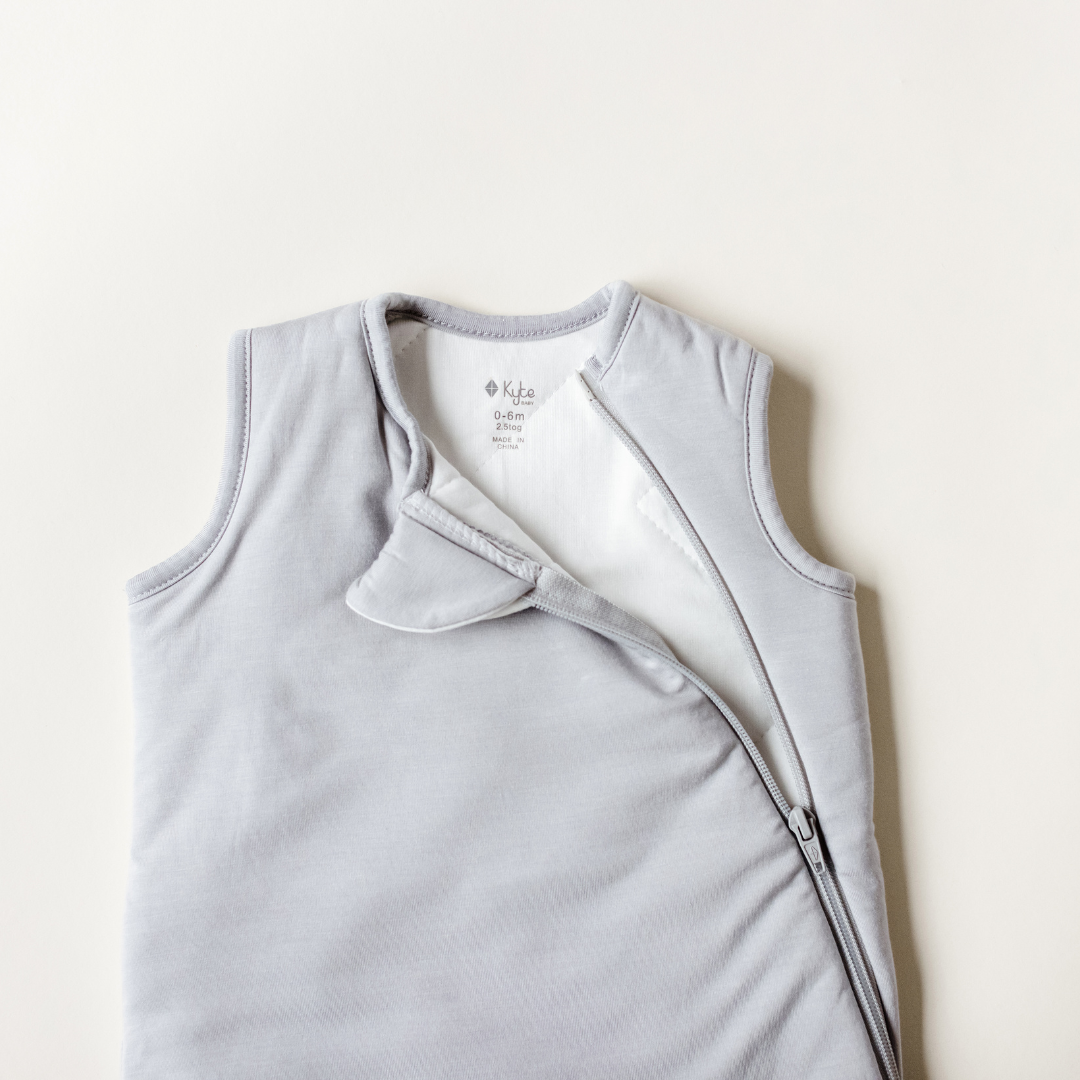I’m sure you’ve heard about the basics of a safe sleep environment, but today I want to dive a little deeper into the temperature of the nursery, what your baby should be wearing for sleep, and how to dress them appropriately for the seasons.
Ideally, we want your baby’s bedroom to be somewhere between 68 and 72 degrees Fahrenheit, with optimal airflow. This cooler temperature ensures that your baby isn’t at risk of overheating.
Babies have poor circulation, and their fingers and toes often feel cold to the touch because of this. This can be tricky to navigate as a newer parent! I remember constantly wondering if my baby was freezing because her fingers and hands were always cold. I brought up my concerns to my daughter’s pediatrician, who assured me that unless her chest, neck, or head was cooler (or too warm) to the touch, there was no reason to be overly concerned. If the center of her body felt like a normal and comfortable temperature, she was just fine.
In addition to this reassurance from our pediatrician, I received the same information in my training to become a sleep consultant.
So, does your baby need socks, mittens, and three layers to sleep in?? Likely, no.
I want you to first identify the actual temperature of your child’s bedroom. Many monitors have the room temperature on them, and if yours doesn’t, you can buy an indoor thermometer from Amazon or at your local Walmart or Target, often for less than $10.00.
Once you know this, you can figure out
1 – if you need to adjust the temperature on your thermostat to bring the room warmer or cooler
OR
2 – how to dress your baby the right way for the temperature in their room
I’d recommend trying no. 1 first, and then dressing your baby in a single layer of onesie pajamas plus a swaddle or sleep sack (some people refer to them as wearable blankets too). This is usually enough to keep them at a comfortable sleeping temperature. One other thing to keep in mind is that we sleep better when it is cooler. It’s the same for babies.
In the winter months, and only if the room temperature is a bit cooler or draftier, you might consider adding one more layer underneath with a simple short-sleeved onesie.
It is difficult to control a single room’s temperature in some homes, or you may not have central heat or air. There may not be a fan. It may be colder. If this is the case for your child’s bedroom, consider no. 2 instead, and dress your baby accordingly. You may have to use more or fewer layers or no sleep sack if it’s a hot day. Even just a diaper is appropriate in some cases. Remember to check your baby’s temperature by feeling how warm or cool they are to the touch from their head, neck, and chest areas. If they are cool, add a layer. If they are too warm, remove a layer. This may take some trial and error, and you may need to switch things up at different seasons.
While we are on the topic, I also get asked quite frequently about what brands I recommend for swaddles or sleep sacks.
I love the Ollie Swaddle – “made with love, designed by science.”
If you’re looking for a swaddle transition product, I like to recommend the Zipadee Zip from Sleeping Baby – they allow a baby room to move around, yet provide somewhat of a womb-like presence with enclosed edges.
For sleep sacks, you’ll want to pay attention to the TOG (thermal overall grade) rating. For a nursery temperature of 68 to 72 degrees, you will likely want to buy a 1.0 TOG. I love sleep sacks from Kyte Baby – they are made of bamboo – eco-friendly and super soft. They also fit your baby for quite a long time and are very high quality. One or two per size is all you’ll need. Adjust the TOG accordingly if your child’s bedroom is warmer or cooler during different seasons.
To recap, let’s run through a quick checklist to make sure your little one is comfortable:
- What is the temperature of your child’s bedroom or nursery? Try to adjust to 68-72 degrees.
- Start with a onesie. Add a swaddle or a sleep sack.
- Check your baby centrally – not their hands or fingers! Does their head, neck, or chest area feel too warm or cool to the touch? Adjust layers accordingly.
Find this article helpful. Make sure you browse through the rest of the blog while you are here!
Follow Along on
Instagram
@joliesleep
